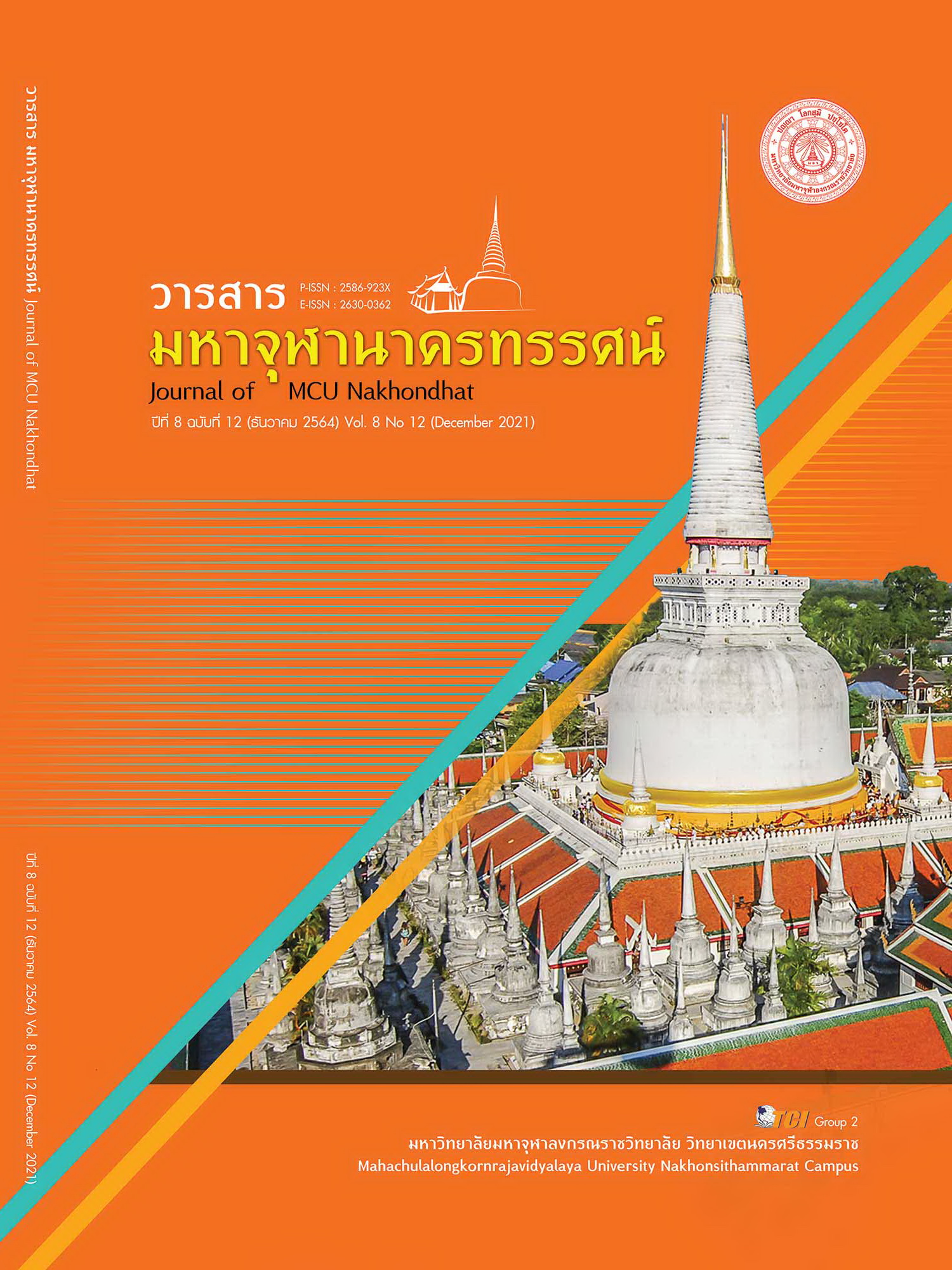THE RELATIONSHIP BETWEEN PROFITABILITY AND RETURN ON SECURITIES IN THE FOOD INDUSTRY
Main Article Content
Abstract
This research have the purpose of study 1) to study profitability and return on securities in the food industry 2) to study the relationship between profitability and return on securities in the food industry. By studying the data during the year B.E. 2014-2018 of 30 companies. This study uses the primary variable, which is profitability, and the dependent variable, which is the return on securities in the food industry. It collects secondary data (Secondary Data) to measure the relationship of variables of listed companies in the food industry. Therefore, the analysis of the relationship between profitability and return on securities in the food industry by financial information. The information is from the consolidated financial statements (Form 56-1) because the consolidated financial statements are the financial statements presented by the group as if they were the same entity. or specific financial statements (in case of no subsidiary) which consists of statement of financial position, statement of income, statement of cash flows, statement of changes in equity and the notes to the financial statements represent the study The consolidated financial statements are from www.setsmart.com, including studying information from various documents related to be used as reference for research. The statistics used in this data analysis were the minimum, maximum, mean, and standard deviation. Statistics used to test the study hypothesis are Pearson Correlation Coefficient and multiple regression analysis.The results, profitability is correlated with returns on securities in the food industry. With statistical significance at the 0.05 level, the relationship between profitability and return on securities in the food industry was in the same direction. That is to say, when the two factors change increases. Resulting in increased profitability statistically significant at the 0.05 level.
Article Details
References
จรรยวรรณ จิตวรพันธ์. (2546). มูลค่าเพิ่มทางเศรษฐศาสตร์ มูลค่าเพิ่ม อัตราส่วนทางบัญชี และผลตอบแทนของหุ้นสามัญ. วิทยานิพนธ์ ปริญญาบัญชีมหาบัณฑิต สาขาการเงิน จุฬาลงกรณ์มหาวิทยาลัย.
ธาราทิพย์ สิริจินดา. (2553). ความสัมพันธ์ระหว่างอัตราส่วนทางการเงินกับอัตรา ผลตอบแทนของบริษัทจดทะเบียนในตลาดหลักทรัพย์. การค้นคว้าอิสระ ปริญญา บัญชีมหาบัณฑิต สาขาการบัญชี มหาวิทยาลัยธรรมศาสตร์ คณะพาณิชยศาสตร์และ การบัญชี
เขมณัฐสิตา โชตินลินทิพย์. (2554). ความสัมพันธ์ระหว่างอัตราส่วนทางการเงินกับการ จ่ายเงินปันผลของบริษัทจดทะเบียนในตลาดหลักทรัพย์แห่งประเทศไทยกลุ่ม set 100. วิทยานิพนธ์ปริญญาบัญชีมหาบัณฑิต สาขาการบัญชี คณะพาณิชยศาสตร์และ การบัญชี มหาวิทยาลัยธรรมศาสตร์.
นันทาภา กุลสัมพันธ์โกศล. (2556). การใช้ข้อมูลอัตราส่วนทางการเงินในการเลือกสินทรัพย์ ลงทุน:กรณีศึกษาตลาดหลักทรัพย์แห่งประเทศไทย (SET). การค้นคว้าอิสระ ปริญญา บัญชีมหาบัณฑิต สาขาการเงิน มหาวิทยาลัยธรรมศาสตร์.
สุธารัตน์ นรขุน. (2553). ความสัมพันธ์ระหว่างกำไรสุทธิ กระแส เงินสดสุทธิจากการ ดำเนินงาน กำไรส่วนที่เหลือและมูลค่าเพิ่มเชิงเศรษฐศาสตร์กับผลตอบแทนของหุ้นใน กลุ่ม SET100. วิทยานิพนธ์ ปริญญาบัญชีมหาบัณฑิต สาขาการเงิน. มหาวิทยาลัยธรรมศาสตร์.
อัญญา ขันธวิทย์. (2552). การกำกับดูแลเพื่อสร้างมูลค่ากิจการ. กรุงเทพฯ: ตลาดหลักทรัพย์ แห่งประเทศไทย.
สินี ภาคย์อุฬาร. 2558. ความสัมพันธ์ระหว่างอัตราส่วนทางการเงินกับราคาหลักทรัพย์ของ บริษัทที่มีมูลค่าหลักทรัพย์ตามราคาตลาดสูงสุดของแต่ละกลุ่มอุตสาหกรรมที่จด ทะเบียนในตลาดหลักทรัพย์แห่งประเทศไทย. การค้นคว้าอิสระ ปริญญาวิทยาศาสตร์ มหาบัณฑิต สาขาวิชาการเงิน มหาวิทยาลัยกรุงเทพ.
ตลาดหลักทรัพย์แห่งประเทศไทย. (2558). คู่มือ (Manual Guides) สูตรค่าสถิติ (Key Statistics) สูตรอัตราส่วนทางการเงิน (Financial Ratios). ตลาดหลักทรัพย์แห่ง ประเทศไทย.
สถาบันพัฒนาความรู้ตลาดทุน ตลาดหลักทรัพย์แห่งประเทศไทย. (2548). การลงทุนในตรา สารทุน. กรุงเทพฯ: อมรินทร์พริ้นติ้งแอนด์พับลิชชิ่ง.
Biddle, G.C., Bowen, R.M. and Wallace, J.S. (1997). Does EVA Beat Earnings? Evidence on Associations with Stock Returns and Firm Values. Journal of Accounting and Economics. 24(2), 301-336.
Grant R. M. (1996). Toward a Knowledge-based Theory of the Firm. Strategic Management Journal. 17(1), 109-22.
Thompson, J. L. (2009). The world of the entrepreneur–a new perspective. Journal of workplace learning. 11(6), 20-22


